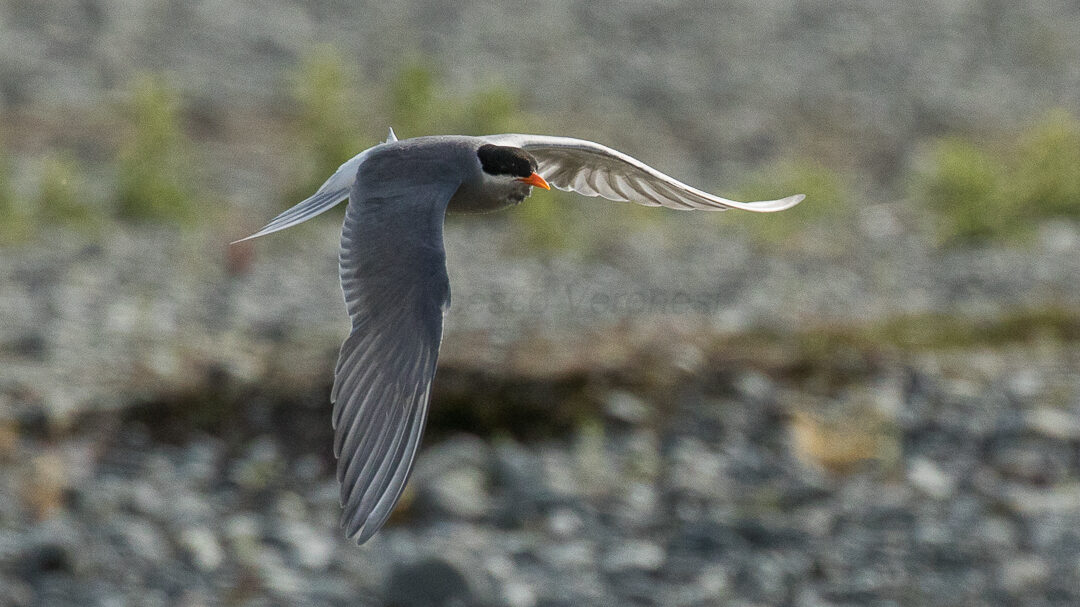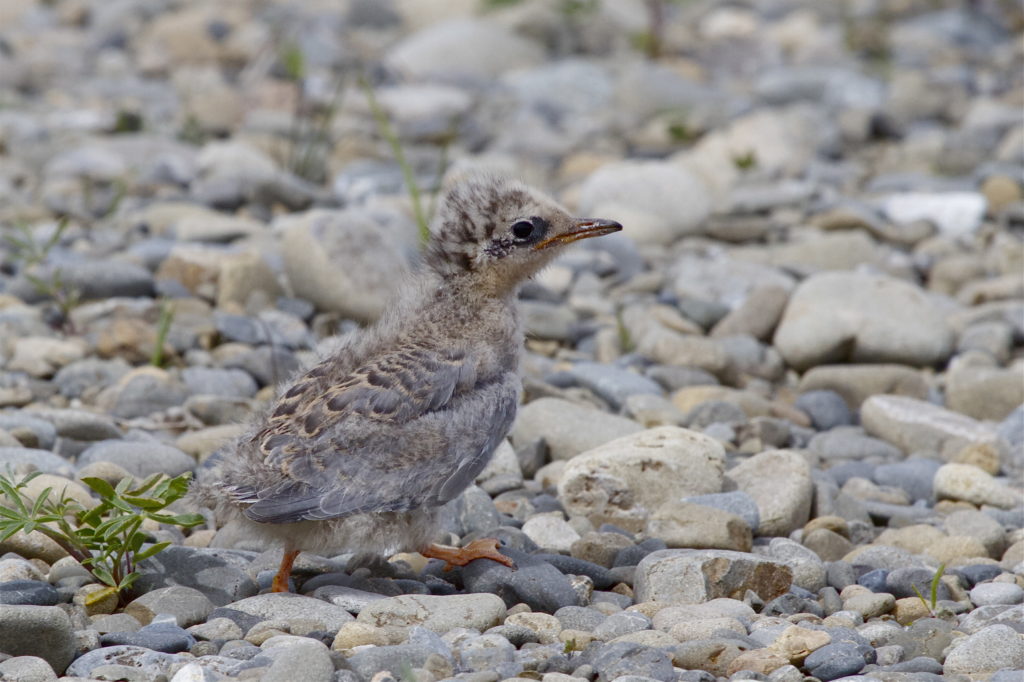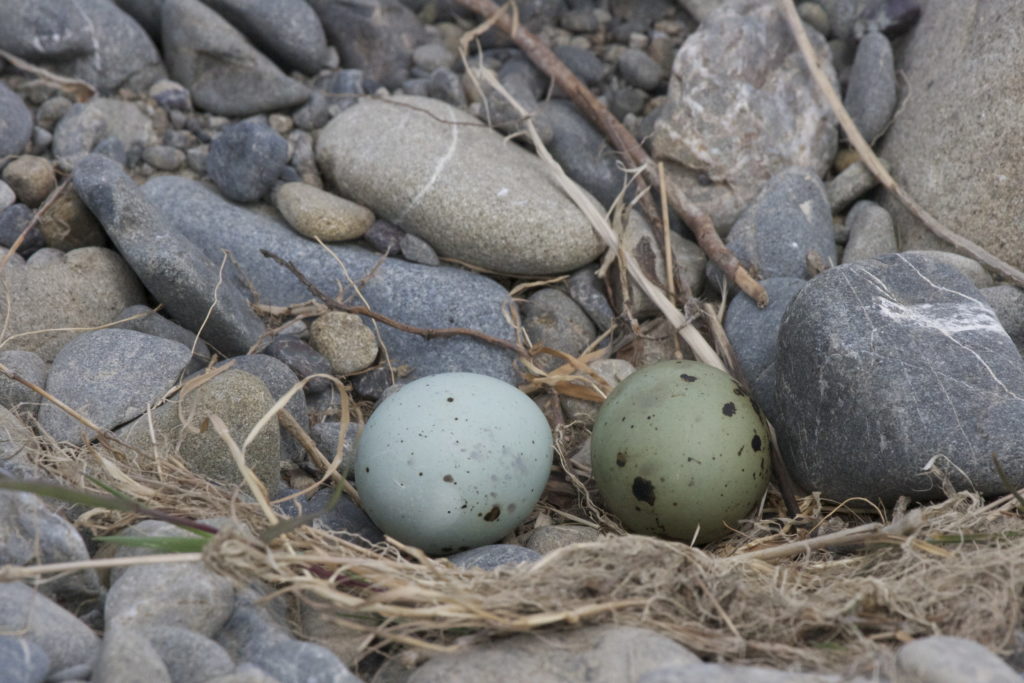Ground-nesting river birds are tricky to protect. Their eggs and chicks are an easy meal for predators and even though some species, like terns, nest together in colonies, the birds may choose a different stretch of river to nest on from one year to the next.

Conservation management on the South Island’s braided rivers would be just a little easier if colonies could be persuaded to return to a particular site each year – but how might it be done? Researchers from Lincoln University near Christchurch recently investigated whether ‘social attractants’ might tempt globally endangered black-fronted terns to settle at a chosen site.
So what exactly is a ‘social attractant’ in conservation management?
“Social attraction techniques are sensory‐based conservation tools in which attractants are used to influence habitat selection, primarily breeding habitat selection. Social attraction, using decoys in combination with chick translocations, was first used for conservation in the successful restoration of Atlantic puffins to a historical nesting site on Eastern Egg Rock Island, Maine, USA, in 1973. Since then, social attraction techniques have been used in restoration projects for ≥49 seabird species at 100 sites in 14 countries.”
Internationally, various tern species have proved responsive to social attractants, so there’s good reason to expect our endemic black-fronted terns (Chlidonias albostriatus) might be susceptible to decoys and audio playback too. It’s a small tern species with a declining population and is classified as endangered. It nests on the South Island’s braided rivers.

“The black‐fronted tern population was estimated to contain 8,325 individuals in 2011. These terns breed almost exclusively in gravel‐braided riverbeds, in small, dispersed colonies, which each generally have less than 50 pairs. Currently, black‐fronted tern management primarily consists of limited amounts of predator control and habitat enhancement, both applied at varying spatial and temporal scales in a few rivers.”
Predator control and habitat enhancement has helped increase tern numbers in some population, but efforts can be frustrated if the terns nest somewhere else the following year.
“The low degree of breeding‐colony site fidelity generally demonstrated by black‐fronted terns greatly increases the difficulty of management, because birds may move colony locations from specific management zones in response to changes in habitat availability. The potential use of social attractants to enable managers to predetermine black‐fronted tern breeding sites may be able to drastically improve the effectiveness and efficiency of management.”
In their study, researchers hoped to determine how black‐fronted terns interact with social attractants in their breeding grounds and investigate whether the presence of social attractants would influence their breeding site selection.
“New Zealand contained 307 rivers with braided sections, encompassing >250,000 hectares in total area. The Canterbury region, eastern South Island, contained 59% of New Zealand’s braided rivers, within which 60% of the black‐fronted tern population breeds. In the 2016 breeding season (September–December), we deployed social attractants in 9 braided rivers throughout Canterbury from the Upper Waimakariri River in the north to the Ahuriri River in the south.”
Experimental sites were selected based on a combination of 5 factors:
- known presence of black‐fronted terns,
- reliability of river access (able to access and observe sites under most conditions),
- sites protected from floods (selecting sites that would be safe from inundation in minor floods),
- avoidance of known previous nesting sites (by>500 m),
- and expert advice on the physical characteristics of available habitat based on extensive observations in hundreds of colonies.
Sites showed a variety of high and low river flow rate, the presence or absence of predator control, and river reaches with varying degrees of weed invasion.
“We played audio tracks through a custom‐built, universal serial bus (USB) sound anchor system (Biodiversity Group, Department of Conservation Electronics Unit, Christchurch) with a horn speaker and powered by a 12‐V sealed lead acid battery. The sound anchor system played tracks from a secure digital card on a schedule programmed into the USB sound anchor software program.”
“Initially, we played a black‐fronted tern recording (track 37, 1 minutes 10 seconds in length) from the McPherson Natural History Unit Sound Archive at all sites on a 5‐minute playback schedule of 1 minute on and 4 minutes off. After 12 October, we changed the audio to an approximately 10‐minute on and 10‐minute off schedule. The new schedule sequenced through 3 tracks (approximately 10 min each) that combined the original recording with additional recordings made by one of the authors.”
The audio tracks included a variety of different black‐fronted tern calls, including ‘fish,’ ‘begging,’ and ‘kit’ (‘ki’) calls. Audio was played from 6.30am to 5pm (approximately just after sunrise until just before sunset).
Decoys were also created and painted to resemble black-fronted terns.
“We placed 10 decoys in each treatment plot in a hexagonal arrangement alternating between single and paired decoys (facing toward each other approximately 0.3–0.5‐metre apart) around a single central decoy. All single and paired decoys were approximately 2 metres from any other decoys and randomly faced either up or downstream. We placed the horn speaker facing either up or downstream to direct the sound away from the untreated [experimental control] plot and over the decoys.
Behavioral observations were recorded by an observer sitting 50–80 metres from the treatment or untreated plot. Tern behaviors recorded during each observation session were:
- flying terns that passed the treatment or untreated plot without interacting;
- flying terns circling the central plot (approximately 25 square metres central area within which decoys were placed at the treatment plot and a similar area without decoys at the untreated plot);
- terns hovered over the central plot;
- landing events within the central plot (‘land‐in’); and
- landing events in the larger 100‐metre radius area, but outside of the central‐plot area (‘land‐out’).
“The maximum number of birds observed at any one time. Locations of the nearest tern nesting to the treatment and untreated plots were also recorded throughout the breeding season. We observed sites at least once every 2 weeks, for 1.0 hour at each of the treatment and untreated plots from 11 September through to 20 December 2016, except for the Hopkins River site, where observations concluded on 9 November after flooding. All observations were carried out between 7.30am and 5pm. We randomized timing of observations at the sites, so they were visited at various times of day throughout the season.”

Environmental conditions, cloud cover, wind speed, and temperature were estimated and recorded into classes at the start of each observation session. Observations weren’t completed in unsuitable weather conditions, such as rain or winds above approximately 70 km/hour.
The study found that terns interacted with the social attractants compared with the paired untreated plots absent of social attractants.
“Nearest locations of tern breeding were recorded for 8 of the 10 sites, with breeding recorded within 300 metres of the social attractant experimental plots at 5 of these sites. These results suggest that social attraction has the potential for use in black‐fronted tern conservation by drawing breeding terns into habitat that has added predator or habitat management.”
So what are the implications for conservation management of black-fronted terns?
“The combination of significant interaction with attractants and close proximity (< 300 metres) of tern nesting to 5 of the experimental sites, suggest that social attractants have great potential for use in future black‐fronted tern conservation. If conservation managers could attract terns to specific sites, it would allow targeted predator and weed control to be effective over several seasons, rather than having to move management to new sites as terns relocated. The next step would be to identify whether social attractants may be used to influence tern breeding colony locations. The current study supports findings of other researchers and demonstrates the promise of social attractant techniques for the conservation of an endangered, colonial breeding seabird species.”
The full research article is published in the Wildlife Society Bulletin. Only the abstract is freely available online.
Social Attractants, a Conservation Tool for Black‐Fronted Terns (2019)
Read more research on terns

